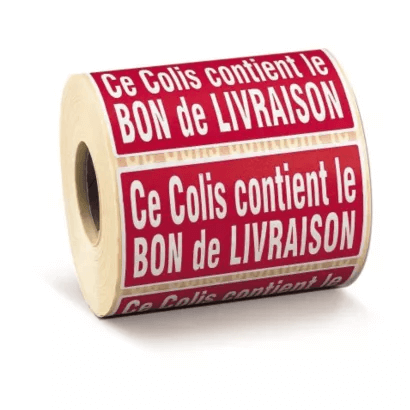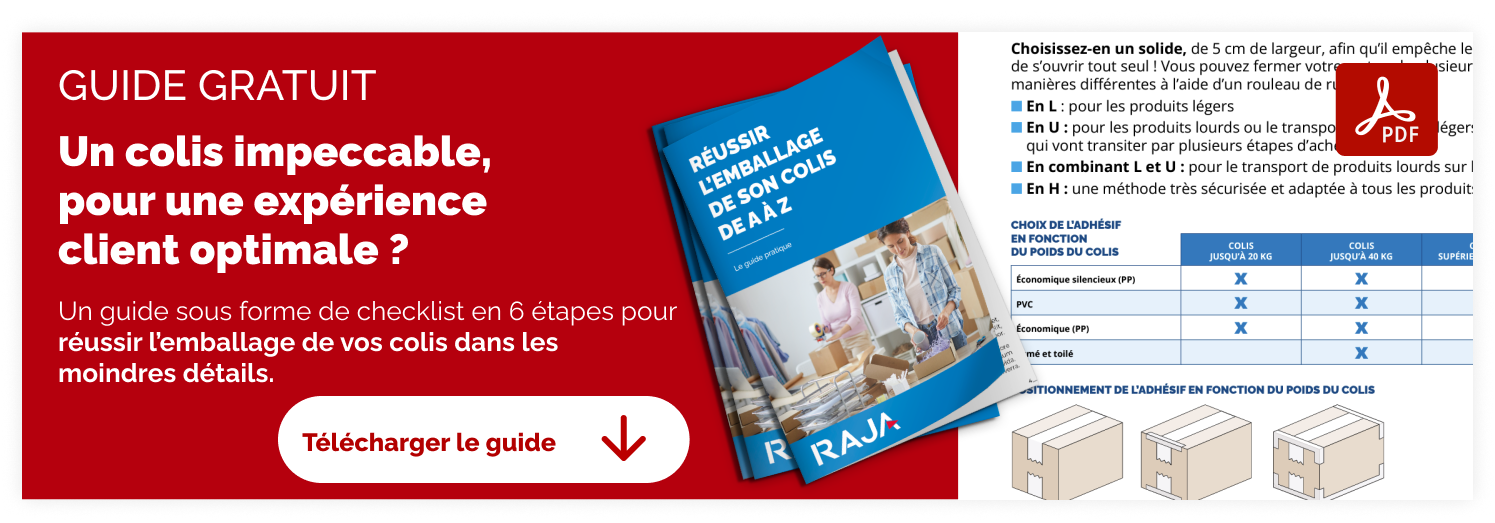As you know, the labelling of your parcels is a key element, as it allows your carriers to deliver your customers in due form. Far from being mere formalities, the labels on your parcels contribute to the customer experience that you offer your end customers.Discover in this article all the best practices and key equipment to acquire in order to properly manage all the labels to be affixed to your parcels.
How to obtain your shipping labels?
There are different methods for obtaining your parcel shipping labels, depending on the processes and logistical tools that you have put in place in your company. The first option is to go to the Post Office to buy your labels, if you use the services of the Post Office. This is the option that many young e-merchants opt for when they are just starting up their business. Theytake advantage of
this
option to make sure that their customers are well informed about their order
- The tracking number of the package
- The date of shipment
- The number of packages associated with the order
- Weight of the package (and sometimes also its volumetric weight)
- The full address of the recipient
- The details of the shipment of the parcel itself (Express, International, Standard, Relay point…), which allow the carriers to know what level of service has been provided for your parcel
sometimes, and especially for parcels shipped internationally, you are also asked to indicate the contents of the order on the parcel label. This makes it easier for customs to deal with. Depending on the contents of your order, you may need toadd other labels to your packaging. For example, if your goods are fragile or sensitive to temperature variations, it may be worth indicating this so that the carrier and the customer can handle the parcel better. You will find out more about the different types of additional labels that you may need later in the article.
How do you create your shipping labels?
First of all, choose a parcel label format that is adapted to the standards of your carrier. The standard size of most of the labels produced is generally 10 x 15 cm, or A6. However, there are other formats among the various carriers: check
the
information on the labels the right printerif you need to, don’t hesitate to look for a multi-purpose printer that can not only print your shipping labels, but also those used to identify the different parts of your stock. It doesn’t matter if it’s a laser printer, thermal transfer printer or inkjet printer: just make sure that the label printer meets the requirements of your carriers (especially in terms of print size), and is powerful enough to print the number of labels you need every day. Each packing station should have its own printer, to give your operators complete autonomy to print your labels digitally. Then choose the labels that fit the printer you’ve selected. Again, there’s a wide choice
 |
Label sheets without integrated adhesivecan be suitable for logisticians who print few labels for their parcels each day. |
 |
If you choose non-adhesive labels, don’t forget to buy the right tape to stick them on your packaging a transparent adhesive tapefor example, if you choose to use a non-adhesive label that does not interfere with the legibility of barcodes and other key information on your packages. |
 |
Blank self-adhesive labelsfor those who want to save time on their packaging line by limiting the use of adhesive tape, choose the , which is more suitable for professionals. |
 |
Thermal transfer filmthe thermal printers, which have good resistance to rubbing and scratching, are useful if you have chosen a thermal printer. |
 |
Thermal labelsa vellum label to accompany thermal transfer films, which have a very strong permanent adhesive. |
if you need to speed up your order picking line a little more, get a automatic label dispenserthen choose the right labels for the printer you select. Again, the choice is wide: Need to speed up your picking line a little more? Get a
label
dispenser, and let the roll deliver the labels to your operators automatically
 |
Fragile” labelsif your parcels contain fragile items that need to be handled with care during transport, these adhesive labels are ideal to indicate to carriers that they should take special care. |
 |
Overpack labelsthese labels are crucial to indicate to sea, rail, road or air carriers. |
 |
Directional labels, for the transport of liquidsthese bottle labels allow your carriers and customers to avoid returning the package during transport, limiting the possibility of damage to your bottles. |
 |
Low temperature labelsthey are highly resistant to the cold (-30°C to +80°C) and adhere perfectly to refrigerated packages, making them ideal if you are shipping fresh products, for example in the food or pharmaceutical sectors. |
 |
Perishable” labelsfor example, they are ideal for use with packages containing foodstuffs with a limited use-by date. |
 |
Thermal draft shield labelsthese stickers can be used in combination with the right printer, which allows you to print smart labels that stack automatically after printing. |
 |
Labels indicating that the delivery note is in the packagethese stickers are also available in “invoice”, “express” or “urgent” versions, and can be used to communicate key information to the carrier or the customer at a glance. |
| What about return order labels?
If you have a returns policy in place, don’t forget to print out the returns label, and slip it into the packaging, to make life easier for your customers. Need to go further in your returns process? Check out RAJA’s ultimate returns guide. |
where to stick your labels on your packages
Ideally, shipping labels should be stuck to the top of your package, with the entire label on one side.The idea? The barcode or QR code on it should be easily scannable by carriers.Also, be sure to stick all your labels on one side if possible, to make it easier to read them when handling your shipments.Now you’re equipped with all the supplies and best practices for managing labels on your packages well.Ready to take your customer experience to the next level, creating perfect packages? Download our guide to discover all the keys to successful packaging from A to Z.















